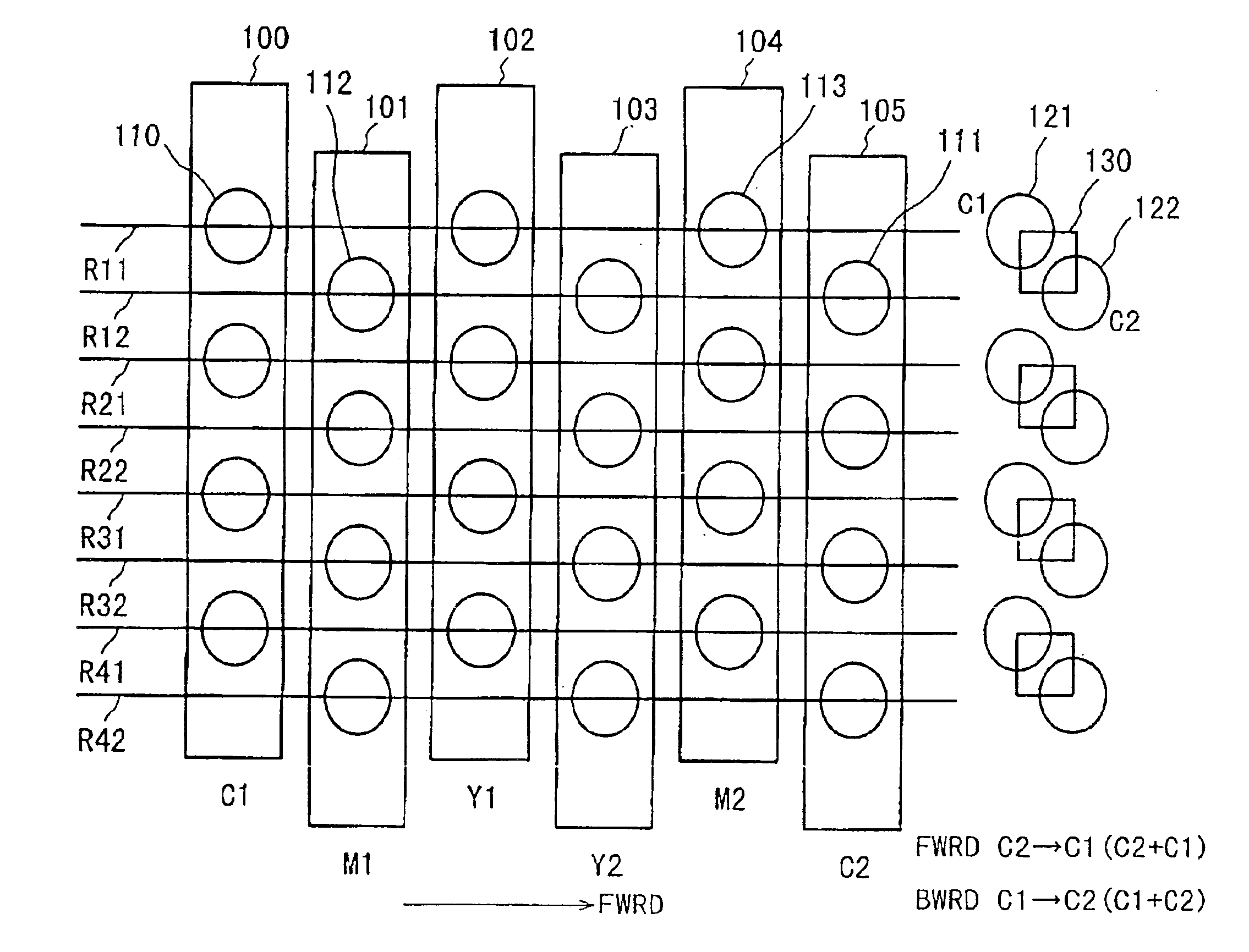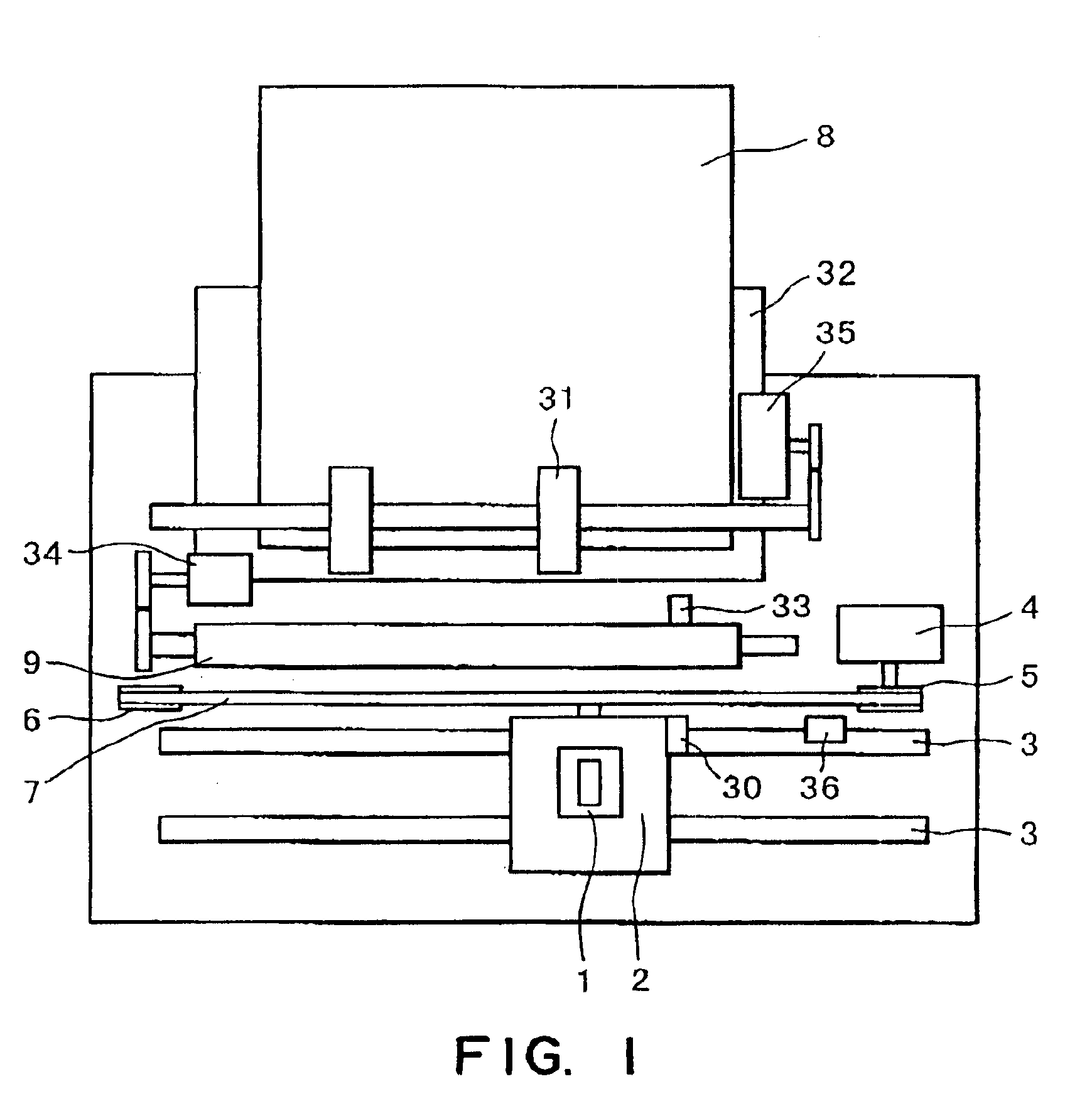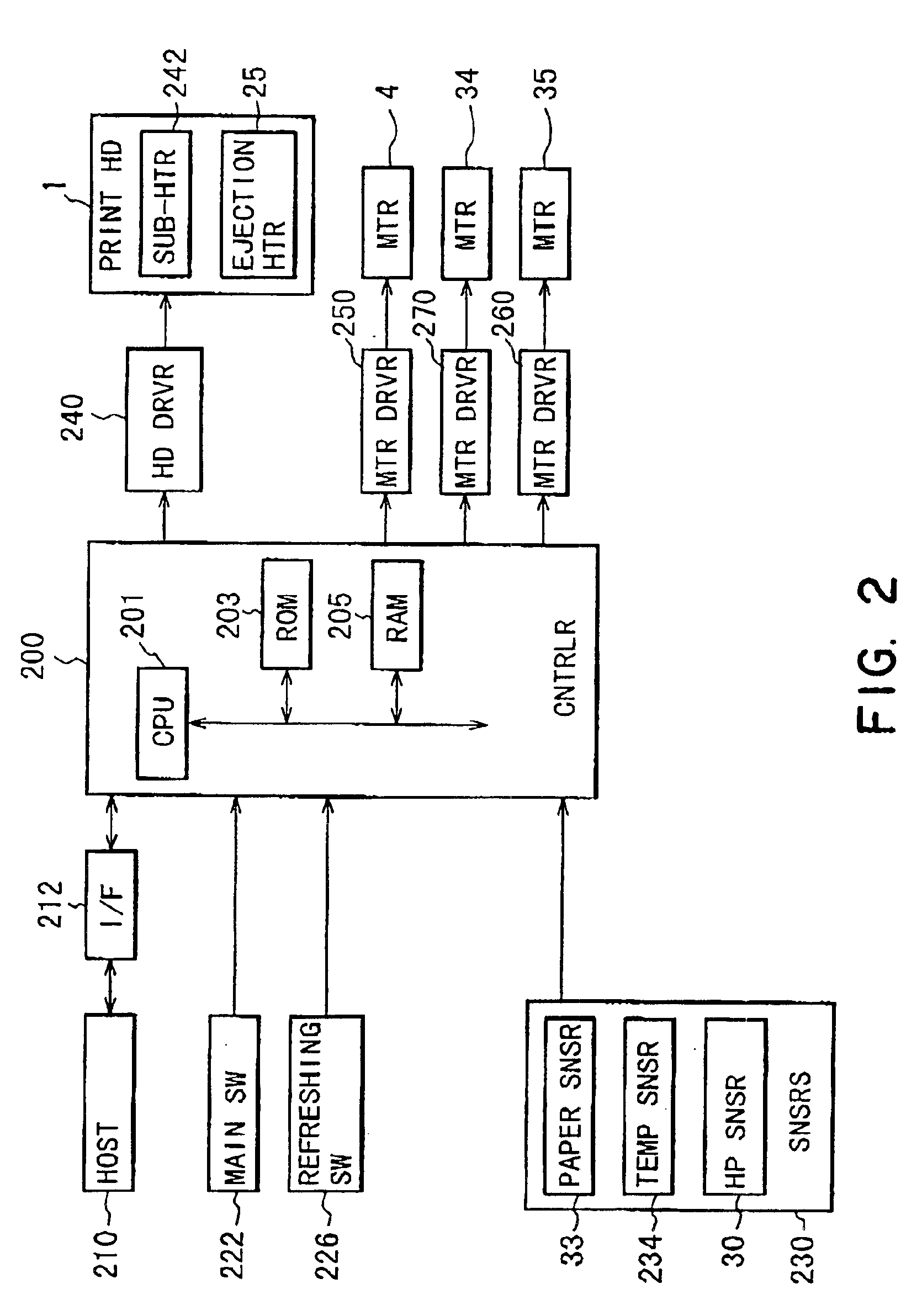Print apparatus and printing method for forming a color image by applying different color inks to a printing material using a recording head
a printing method and color image technology, applied in printing mechanisms, printing, spacing mechanisms, etc., can solve the problems of color non-uniformity, low throughput, and lack of fundamental solutions, and achieve the effect of low density portion
- Summary
- Abstract
- Description
- Claims
- Application Information
AI Technical Summary
Benefits of technology
Problems solved by technology
Method used
Image
Examples
embodiment 1
(Embodiment 1)
[0081]FIG. 3 is a partial schematic view of a major part of a recording head portion of a head cartridge 1. In this Figure, designated by 100 is a first recording head for ejecting cyan ink (C1). Designated by 101 is a first recording head (M1) for first recording heading magenta ink (M1).
[0082]Designated by 102 is a first recording head for ejecting yellow ink (Y1). Designated by 103 is a second recording head (Y2) for ejecting yellow ink. Designated by104 is a second recording head (M2) for ejecting magenta ink. Designated by 105 is a second recording head (M2) for ejecting cyan ink. Additionally, a recording head for ejecting Bk ink may be used, too.
[0083]The head cartridge 1 is constituted by such said recording heads.
[0084]In head cartridge 1, each of the recording heads includes a plurality of ejection nozzles. For example, the recording head 100C1 includes cyan ejection nozzles 110. The recording head 101M1 includes magenta ejection nozzles 112. The recording he...
embodiment 2
(Embodiment 2)
[0121]FIG. 12 is a schematic view of a major part of a recording head portion of a head cartridge 1 according to another embodiment of the present invention. In this Figure, the constituent-elements are the same as the constituent-elements of the recording head portion shown in FIG. 3. However, the structure of the recording head portion used in this embodiment is different in that pair of the recording heads for the same color for a pixel for each color is deviated relative to the pitch of the nozzles of the recording head by ½ pitch in the sub-scan direction.
[0122]With this structure, the Figure shows the case in which the primary color (cyan) is printed.
[0123]The printing the defective with a pair of two dots at a dot position 121 and a dot position 122 to provide the maximum pixel density for the pixel 130. The dot position 121 and the dot position 122 in the Figure are the positions allotted to the dot elected from the ejection nozzle 110 of the recording head 101...
embodiment 3
(Embodiment 3)
[0139]In the foregoing embodiments, the bi-directional non-uniformity in the single-path bi-directional print is removed using the symmetrical head adapted to the bi-directional print. However, the present invention is effectively applicable also to the case in which the bi-directional print is carried out using a known head in which the recording elements are arranged in the order of colors such as CMYK in the main scan direction.
[0140]This embodiment is characterized in that bi-directional non-uniformity is avoided when the bi-directional print through at least two paths is carried out using a recording head in which the recording elements are simply arranged in the main scan direction, for example, CMYK. In this embodiment, similarly to the foregoing embodiment, the control is effected such that incidence probabilities of pixels at which the orders of shots are different, are substantially the same in the raster one direction, in a low density portion. Furthermore, ...
PUM
 Login to View More
Login to View More Abstract
Description
Claims
Application Information
 Login to View More
Login to View More - R&D
- Intellectual Property
- Life Sciences
- Materials
- Tech Scout
- Unparalleled Data Quality
- Higher Quality Content
- 60% Fewer Hallucinations
Browse by: Latest US Patents, China's latest patents, Technical Efficacy Thesaurus, Application Domain, Technology Topic, Popular Technical Reports.
© 2025 PatSnap. All rights reserved.Legal|Privacy policy|Modern Slavery Act Transparency Statement|Sitemap|About US| Contact US: help@patsnap.com



